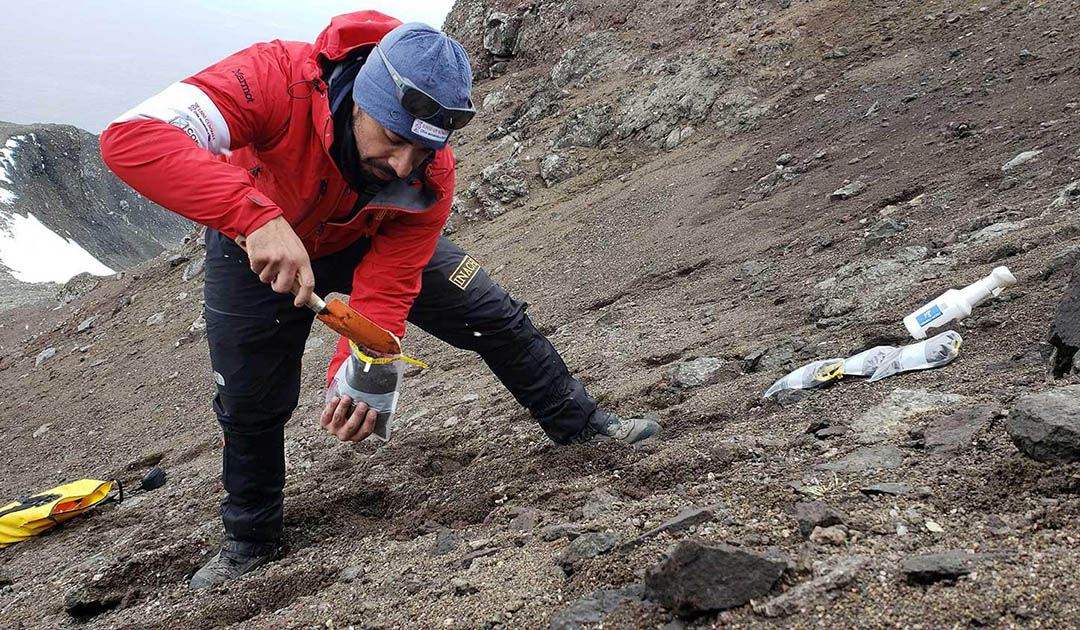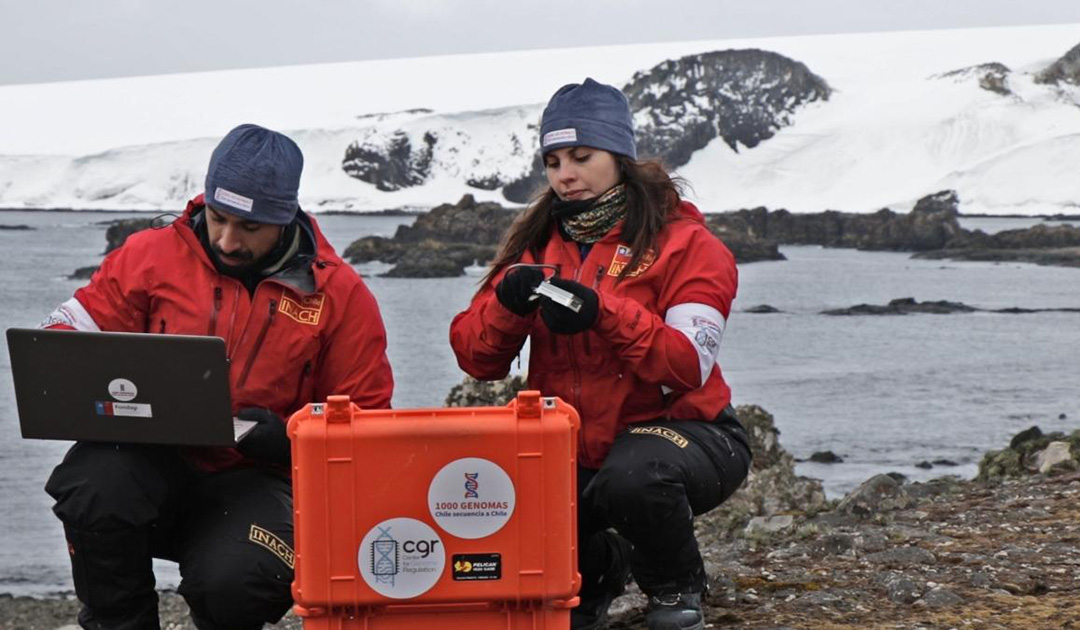
The soils and ice of the polar regions are still home to numerous previously undiscovered and unknown bacteria that have been isolated for millions of years and are now being released due to climate change, allowing them to come into contact with the rest of the world. And this could become a global health problem, researchers at the University of Chile found in a study. They have been able to isolate genes from Antarctic microorganisms that confer resistance to antibiotics and other antimicrobials such as copper or chlorine and may be transferable to known pathogens. Their study appeared in the journal Science of the Total Environment.
A team of researchers from the University of Chile collected soil samples at various sites on the Antarctic Peninsula in 2017 and 2019 to study the microbial communities in the hostile habitat. They found a great diversity of microorganisms despite the extreme environmental conditions. But what amazed them more, among other surprising adaptations and abilities, was the high resistance of many bacteria to the effects of several classes of antibiotics and other toxic substances.
Dr. Andrés Marcoleta, a scientist at the University of Chile and lead author of the study, warns that these resistance capabilities could be transferred to pathogenic bacteria with serious global health problems. Some of these “superpowers” are contained in mobile DNA fragments (called plasmids) that are easily transferable to other bacteria, Dr. Marcoleta said. “So the idea that these genes might eventually find their way into bacteria that cause infections in humans or other animals, giving them greater resistance, doesn’t seem far-fetched.”

Dr. Marcoleta goes on to explain that in this way, the “resistance genes” could strengthen other pathogens with which they come into contact in the future and promote the spread of infectious diseases. He emphasizes that the bacteria found and their genes are not due to contamination or human intervention, but that they have evolved over the course of evolution as an adaptation to the extreme conditions in Antarctica, and they form the microbial community typical of these Antarctic soils.
Bacterial genera predominant in Antarctic Peninsula soils include Pseudomonas, several of which showed resistance to a wide range of antibiotics of different classes. Dr. Marcoleta explains that Pseudomonas are known to adapt to many different environments and have a high resistance to all kinds of extreme conditions and toxic substances. “Some of them cause infections in humans and are responsible for serious diseases such as cystic fibrosis.” While they found no evidence of pathogenic pseudomonads in the samples, the Pseudomonas representatives they found “could serve as a source of resistance genes and could be transferred relatively easily to pathogenic pseudomonads.”

Another common bacterial genus in Antarctic soil is Polaromonas, which have the potential to inactivate certain antibiotics that are critical in the treatment of various infections. According to Dr. Marcoleta, this strain of bacteria has already been found in urban regions of Siberia, where pathogenic bacteria carried by humans are also present. “This confirms that there are already contacts between bacteria native to polar environments and pathogenic bacteria, which could lead to an exchange of genetic information between them.”
On the other hand, the discovery of this highly potent Antarctic bacterial community could guide the development of potential new antibiotics. In addition, several bacterial strains have great biotechnological potential that could open up their use in completely different areas, the research team noted. “We were able to confirm the surprising capabilities of some bacterial strains for the production of potential new antibiotics, the bioremediation of toxic and polluting substances, and the sustainable production of biopolymers that can serve as biodegradable substitutes for petroleum-derived plastics,” Dr. Marcoleta said.
Because microorganisms, specifically pathogens, can have global impacts, as demonstrated by the Covid 19 pandemic, the question of whether climate change is facilitating the emergence of infectious diseases should not be ignored. Global warming, which is proceeding rapidly, especially in polar regions, is now exposing microorganisms or genetic information that are coming into increased contact with humans, animals and other organisms. “In a possible scenario, these genes could leave this reservoir and favor the emergence and spread of infectious diseases,” explains Dr. Marcoleta, adding, “On the other hand, we know that there is an increasingly frequent and massive transit of humans between the Antarctic Peninsula and the rest of the world, mainly via Chile. This creates potential contact opportunities between microorganisms that colonize or infect humans and those that naturally inhabit the soils of the white continent.”

To further explore the microorganisms that inhabit the soils of the Antarctic Peninsula, their potential as a source of antibiotic resistance and virulence genes, and the effects of climate change on these microbial communities, Dr. Marcoleta has already begun the larger, multidisciplinary research project “mBioClim” with other scientists from the University of Chile and the University of La Frontera. “Now that we know that Antarctic soil is a large reservoir of potential resistance genes, we still need to investigate the pathways by which these genes can be transferred to other bacteria and whether these genes, when they reach pathogenic bacteria, actually confer enhanced or novel resistance properties,” Dr. Marcoleta said.
“On the other hand, we know that not only resistance genes are important in the development of infectious diseases, but also genes that allow bacteria to be more successful in infection or to cause more severe infections. Therefore, it is important to determine whether genetic information is present in this diversity of Antarctic soil bacteria that could increase virulence if adopted by pathogenic bacteria. There is also the question of how the exposure of new soils as a result of thawing and subsequent colonization by other organisms would affect these microbial communities and the transfer of genetic information. All these aspects, as well as the discovery of new microorganisms and unique genes of Antarctic origin, will be investigated in the new ring project that is now starting,” he concludes.
Julia Hager, PolarJournal
More on the subject:





